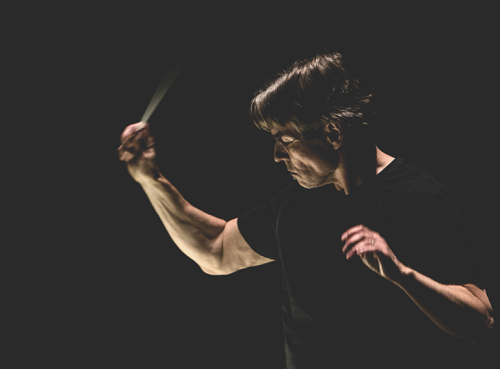 United States Various: San Francisco Symphony / Esa-Pekka Salonen (conductor). Davies Symphony Hall, San Francisco, 24.6.2021. (HS)
United States Various: San Francisco Symphony / Esa-Pekka Salonen (conductor). Davies Symphony Hall, San Francisco, 24.6.2021. (HS)

Gabrieli – ‘Canzon per sonar septimi toni No.2’, ‘O magnum mysterium’ and ‘Canzon per sonar septimi toni No.1’ from Sacrae symphoniae (arr. Timothy Higgins)
R. Strauss – Metamorphosen
Schumann – Symphony No.3 in E flat major, ‘Rhenish’
Finally, Esa-Pekka Salonen got the full complement of San Francisco Symphony’s musicians under his baton for the first time since his tenure as music director officially began last autumn. He has led virtual performances of smaller, socially distanced groups for the orchestra’s several video-streaming initiatives. Recent live concerts, which began in May, have used limited forces, and woodwinds and horns only joined the fun last week.
This concert – before an enthusiastic audience, masked but not socially distanced – finally employed a full brass section and seated all the musicians in their usual spots. They had to share the space with an array of robotic cameras, two of which kept rising above the stage like submarine periscopes, with another swinging back and forth across the back. Other cameras, cloaked in black, looked like gnomes hiding among the string section. All was in service of making a video recording of Richard Strauss’s Metamorphosen for future issue. The mighty sound the musicians achieved hasn’t been heard in Davies Symphony Hall since March 2020.
If there were a cavil, it’s that communication between Salonen and the orchestra has not quite reached the impressive heights that was so apparent in his several appearances with them before the pandemic sidelined everyone. In last week’s concert (review click here) and in this one, orchestral textures could have been more transparent and articulation sometimes felt a bit muddy. There were times when the music wanted to breathe but kept pushing. But you can feel them getting on the same page when it all comes together, as it did in Schumann’s ‘Rhenish’ Symphony which concluded the program.
The outer movements, both marked ‘Lebhaft’ (lively), frame the symphony with country-dance-infused music, the first movement forged ahead but seldom achieved much lift. The finale, however, bounced with joy, with a freedom of motion that was exhilarating to hear. In between, the Scherzo’s tune only occasionally felt like a carefree dance, and the third movement took a while to settle into a friendly amble. The sonorities and breadth of the fourth movement, which evokes a cathedral, opened with breathtaking beauty and led to a lively finale.
That is when Salonen and the orchestra got themselves into a rhythmic, propulsive groove, neither too fast nor too slow, ever-so-gradually picking up steam until the final pages ramped up the intensity and finished with a hearty slap on the back.
The concert opened with three arrangements by principal trombone Timothy Higgins of Gabrieli’s delectably antiphonal motets. Four brass players on the left and four on the right arranged themselves behind the choir seats that surround the Davies Hall stage and, under Salonen, they made excellent use of the hall’s resonant acoustics. The flow and intertwining of the musical lines and the richness of texture as they caromed back and forth were a great way to reintroduce brass to the audience. Their articulation relished the rhythmic variety and almost jazz-like syncopation. From start to finish, it was the highlight of the evening.
Metamorphosen is the second Richard Strauss work Salonen has programmed in successive weeks. The composer’s youthful Serenade in B flat served to reintroduce the woodwinds last week. That was a pleasant performance, and so was Metamorphosen, even if, as in the wind serenade last week, the sonic textures weren’t quite clear enough to expose all of the music’s details. The 23 solo strings followed Salonen’s steady tempos, which only occasionally took moments to breathe. The final measures finished with a touching sigh.
Harvey Steiman